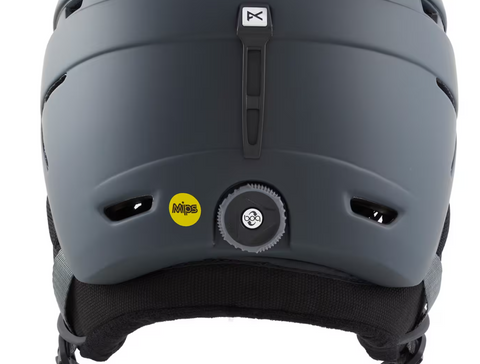MIPS & Wavecel Helmets Explained
MIPS Explained
MIPS helmet technology first arrived on the winter sports scene in 2010 and has since become a gold standard in ski and snowboard head injury protection. Today, the proprietary technology is licensed across more than 100 top helmet brands (including brands we sell like Anon, Giro, K2, Triple8 etc) and is trusted by weekend warriors and professional athletes alike around the world.
MIPS stands for Multi-directional Impact Protection System, which is an advanced safety technology utilized in leading helmets across a wide range of uses, from biking and snowboarding to equestrian and even construction. The system is best defined as a “slip plane” that allows for slight rotational movement between the wearer’s head and the helmet at the moment of impact. This feature is integrated directly into the helmet, between the comfort padding and the outer shell, and is designed to reduce the rotational forces that are exerted on the brain when the wearer is involved in an oblique (non-direct) impact. It is proven that MIPS is 10% better at absorbing impact's.
Injury statistics show that most impacts occur at an angle rather than straight on (linear). And based on extensive scientific research, we know that the human brain is especially sensitive to this rotation and that angled impact causes strain on the brain that can lead to irreparable tearing of brain tissue. MIPS helmet technology is specifically designed to reduce the rotational energy transmitted to the skull and brain by allowing the outer helmet to move 10-15mm in relation to the wearer’s head.

Wavecel Explained
There are other helmet tech such as WAVECEL. WaveCel is a helmet safety technology that's available exclusively for snow in Anon helmets, and is a collapsible cellular structure that lines the inside of your helmet. It behaves like a network of hundreds of interconnected shock absorbers connecting your head and the outer shell of the helmet. WaveCel® technology reacts in a three-step process to help protect your brain. It helps distribute the impact energy through its network of cells, helps reduce impact forces like the crumple zone of a car, and then helps divert rotational forces by flexing and gliding. Basically, it works like a crumple zone that helps absorb the force of an impact before it reaches your head. In order to help protect your head and assist in absorbing energy created by an impact, WaveCel goes through a three-step change in material structure.
How Does Wavecel Work? This is a three-step change referred to as Flex, Crumple, Glide. It absorbs impact forces like the crumple zone of a car. It diverts rotational forces by flexing and gliding. Rotational acceleration is the rapid spin of the head caused by an impact. Higher rotational accelerations carry a greater risk of brain injury.
1 Flex: First, the cells flex to help reduce the initial friction forces.
2. Crumple: Next, the cells crumple like a car bumper upon impact.
3. Glide: Finally, WaveCel glides to help redirect energy away from your head.




